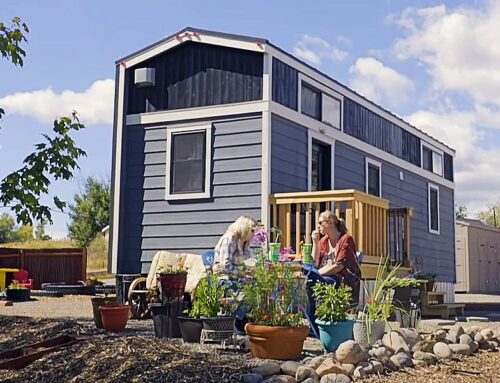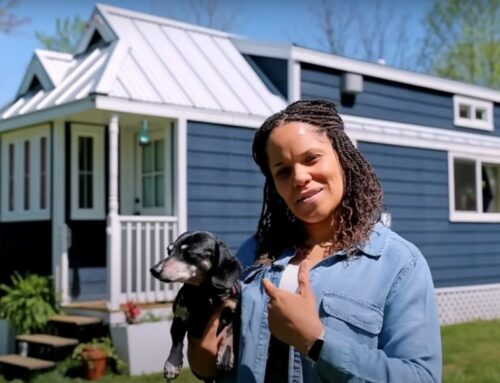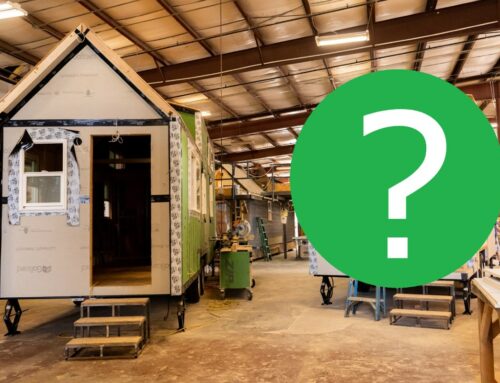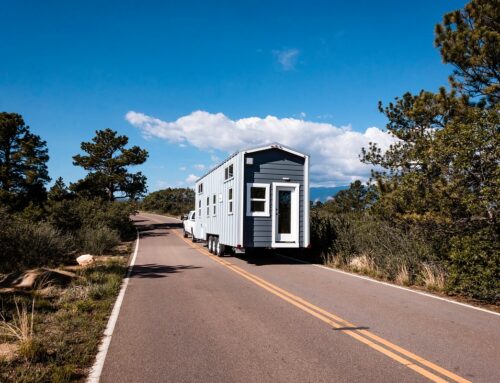Have Your Documents Ready
Most lenders require you submit the following documents:
- A copy of your driver’s license, passport, or state ID.
- A copy of your social security card or W9.
A recent paystub.
Last 2 years tax returns or W2
Proof of good funds for the deposit.
What if you haven’t been working for 2 years? Lenders look at that on a case by case basis. Submitting a letter of explanation often overcomes this concern.
Pick the Best Loan for You
Now that you have the basic documents together it’s important to know the difference between the 3 types of loans used for Tiny House RVs.
Rotate your screen to view the table.
| Conventional RV Loan | Tiny House Loan | Personal Loan | |
|---|---|---|---|
| Available at | Most credit unions and banks | Through tiny house builder | Online |
| Rates | Low (6% – 13%) | Medium (8.2% – 14%) | High (10%-16%) |
| Length | 15-20 years | 15-25 years | 5-10 years |
| Minimum Salary* | ~$3,500 / mo | ~$2,500 / mo | ~$5,000 / mo |
| Minimum FICO* | ~640 | ~575 | ~700 |
| Down Payment | 0% – 20% | 0% – 23% | 0% |
| 1st Payment | Before it’s built | After delivery | Before it’s built |
| Consider This | While rates are great, these are designed for buying a Winnebago or Jayco. They will look at your Tiny House as a luxury purchase and want to see high disposable income. |
Easy to qualify, but the most paperwork. These loans look and feel more like a mortgage than an RV loan. | Higher rates and monthly payments. These loans are best suited for buying a DIY tiny house that doesn’t qualify for other loans. |
*The minimum salary and FICO scores are estimates. They will vary from lender to lender. Other factors such as outstanding debt or the source of your deposit may also affect the lenders decision.
At Tumbleweed, we work with all 3 types of lenders. If you complete our monthly payment form, we’ll show you different options available specifically tailored to you. We take everything into account, from the state you live in, to any college debt you may have.
Talking to the Lender
IMPORTANT: Always talk to the builder before the lender.
Your builder should be able to recommend a reliable lender. Be cautious when finding your own lender. Often they will approve you for a loan, then pull back the loan when it gets to underwriting at the corporate headquarters. If they’ve never done a tiny house loan before, have a backup plan.
Find out when your first payment is due. Often it takes months for a tiny house to be finished. Is your first payment due before the building even starts? Or after the house is delivered? And what if the house is delayed?
Complete the payment plans form to see loan options tailored specifically for you.
How Long Does This Take?
Step 1: Submit a loan application with a quote from the builder. Usually you get an approval or denial within 1 – 3 business days.
Note: Don’t be discouraged by a denial. We’ve seen about 50% of denials flipped to an approval.
Step 2: Submit your documents
It’s time to dig. The lender will provide a list of documents they need. Then, expect a second wave of document requests. And sometimes even a third wave.
Most borrowers take 1-2 weeks in between each round. For a well organized borrower it can take 1 week, but for the average borrower, this process takes a month.
Step 3: Loan package
Once all the documents are approved, the lender will create the loan documents and send them to you for signature and notarization. Once completed, they are sent back to the lender, for final audit. This usually takes 1 week.
Step 4: Final audit
During final audit, the lender might request updated documents if it’s been several months since you started the loan. Once those documents are submitted, your loan is approved for funding and your tiny house can be delivered. This usually takes 1 day – 2 weeks.







